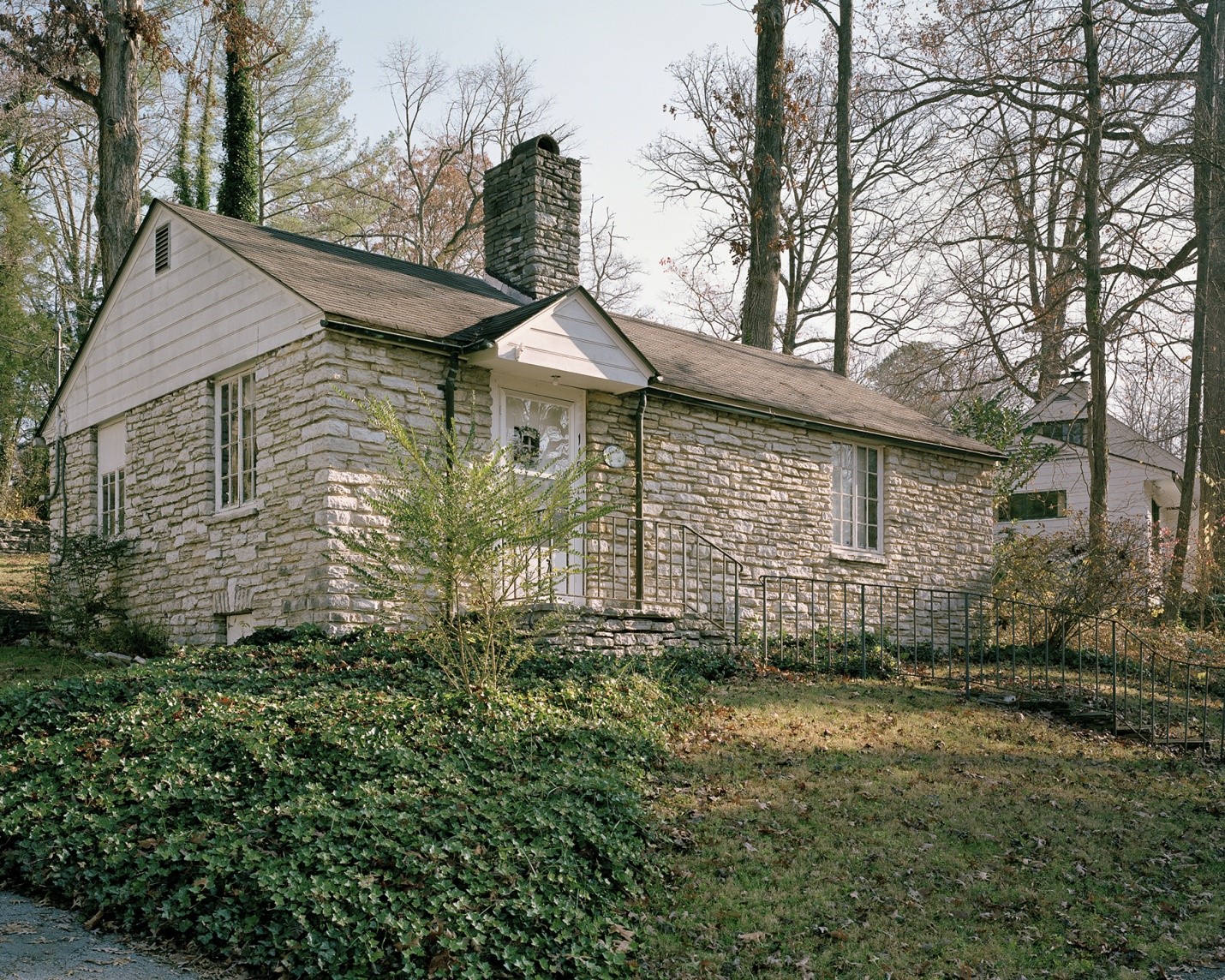New Town of Norris
The New Town of Norris
Houses in the new planned community of Norris, Tennessee were out of financial reach to many of those displaced by eminent domain. It was intended as a model city by the TVA. TVA Chairman Arthur Morgan dreamed that Norris would survive long after construction of the dam was finished and hired designer Earle Draper to design a long-lasting “American ideal” town along the lines of 19th century English garden cities, integrating the natural surrounding natural environment into the town, creating walkable neighborhoods, forest paths, and a compact, quaint town center.[1] In a nod to the nearby hydro-electric dam and the importance the TVA’s bottom line of bringing electricity to the South, Norris, was sometimes called the “first all-electric town,” featuring modern, all-electric homes such as the one in the photo below, which has electric wall heat, electric lamps, and radio.[2]

Indeed, in 2016 the City of Norris boasts on its web site that “The City of Norris has been called a planned community, a model town, a garden city, and even a utopia. To its citizens, however, it is a woodland home, an oasis in the busy world of the surrounding area.”[4] Patricia Bernard Ezzell, a University of Mississippi historian who has studied the TVA past and present, talks about the retreat from city life that is provided by this model town even today:
"Today little has changed in Norris. The greenbelt protects the town from encroachment; the city business district still consists of the post office, a drug store, and a grocery; and the TVA's Resource Management Offices remain a vital part of the community. In today's atmosphere of generic suburbs and strip malls, Norris illustrates the purpose, the necessity, and the success of planned communities in the United States.[5]"

TVA chairman Arthur Morgan, saw Norris as “an independent, self-sustaining community of citizens involved in small cooperative industries.” These included canneries, poultry raising, and creameries.[6] The town had been constructed alongside the new reservoir as temporary housing for engineers and workers on the dam. As these workers left TVA professional staff and other middle-income workers from nearby Knoxville moved in, attracted by the garden city character. In June, 1948 the TVA sold the town to a private company which in turn sold the individual lots to residents.[7]

While idyllic to some, Norris’s emphasis on “traditional” living meant something else to others. Norris reproduced the ways of the American South. As the New Deal Network’s history of Norris uncovers:
"The vision of Norris as a model American community was flawed from the beginning. TVA officials excluded black families from the town. They claimed that this was done to conform to the customs and traditions of the area, but angry black leaders pointed out that poor whites and blacks had lived and worked together side by side in the mountains and valleys of the basin long before TVA came on the scene. During the 1930s the National Association for the Advancement of Colored People (NAACP) conducted three investigations of TVA for racial discrimination in the hiring, housing and training of blacks. (in 1934, 1935 and 1938)[8]"
Beyond the history of racial discrimination, the TVA projects and the construction of Norris introduced class tensions between long-term residents and new middle-income residents of Norris. A long-time Norris resident recalled that, “almost everybody that moved into Norris was college educated and very well paid. I think from that, a lot of resentment came in.” (Crossno) This suspicion lingers to this day. When Norris offered to annex several properties from the nearby town of Bethel to preserve its historic character, Bethel residents fought the proposal.
"The issues of eminent domain are [still] fairly apparent to anybody today because Norris is still dealing with some of the same issues and emotions that came out of the time when the government came in and moved people off their land. We had a city council meeting last Monday, and had 140 residents from the little community of Bethel, (it’s unincorporated), petitioning us not to annex a couple of properties into the city, because a lot of those people are the descendants of people who were moved off their land in the 1930’s…. So people who have been here for 50-60 years, they don’t quite have those same memories, but the older people and their children and grandchildren, and in a lot of cases great grandchildren, they still remember. And they still don’t have good feelings. The antipathy for Norris is so deep that some of the people won’t let their children come to the Fourth of July fireworks show we put on free in the area. So there’s a lot of emotion. (Mariner)"
[1] TVA Chairman Arthur Morgan, however, did insist “that the architecture resemble the vernacular architecture of the region, and he went so far as to make TVA architects inspect and measure existing houses in the region. One result was the traditional dogtrot house being one of twelve basic housing types found in Norris. Different external materials such as native stones, bricks, and shingles varied the houses. Each home was wired for electric heat, and they all had chimneys, fireplaces, and porches with screens.” Patricia Bernard Ezzell, “Norris” entry, The Tennessee Encyclopedia of History and Culture, version 2.0 (updated January 1, 2010). https://tennesseeencyclopedia.net/entry.php?rec=1001 Accessed February 10, 2016.
[2] Ezzell 2003, p. 51
[3] Charles Krutch, Photograph “Interior of a Norris House” in Ezzell 2003, p. 51 (K-126).
[4] Norris, Tennessee website. www.cityofnorris.com Accessed February 10, 2016.
[5] Ezzell. 2010.
[6] New Deal Network, “The Planned Community of Norris,” in “TVA Electricity for All” Website http://newdeal.feri.org/tva/tva08.htm. Accessed February 6, 2016
[7] New Deal Network, “The Planned Community of Norris.”
[8] New Deal Network, “The Planned Community of Norris.”

